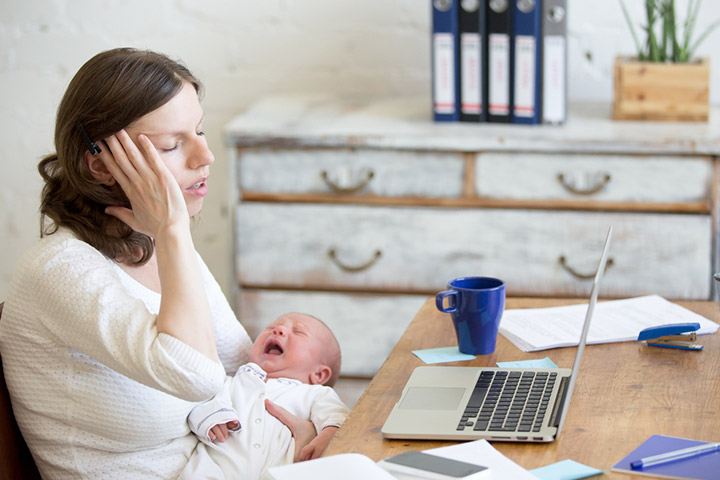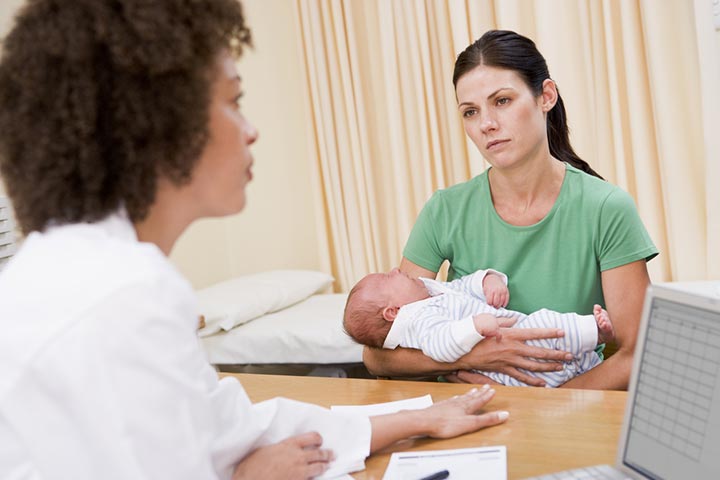
When a baby is delivered through surgery on the abdomen instead of normal birth, it is called a Cesarean, also popularly known as C-section. Just like a vaginal birth, C-section also comes with its own set of complications. With a cesarean, the recovery time is comparatively higher and there are greater risks of infection. Other disadvantages include injury to the bladder and intestines, fetal material entering the bloodstream, bleeding, and risks in future pregnancies (1).
Post-childbirth, new mothers should take ample care in having a good recovery. The nine months of carrying the fetus and then undergoing the C-section surgery takes quite a toll on the body. And it’s important that they follow the do’s and the don’ts diligently for their bodies to get back to a healthy state. Keeping this in mind, we have listed six important things new mothers must avoid after undergoing a C-section procedure:
1. Stressing Your Body
Having a baby is a joyous moment for parents. It can be exciting to the point of becoming overwhelming for the mother. But fresh out of a C-section, you have to prioritize the recovery of your health as well. Your wounds need time to heal, which necessitates that you take sufficient rest. Usually, it takes about six weeks for mothers to come back to a normal condition, though at times longer when there are additional complications during childbirth (2).
Let your family and friends assist you in taking care of your baby in these initial weeks. Try to avoid taking up household chores like cleaning, cooking and other physically straining tasks too soon. Relax and let your body recover completely first.
2. Leaving Your Pains Unattended
Image: Shutterstock
Feeling a sharp pain in the abdomen area and bleeding will be a norm right after a cesarean operation. This can last for days or weeks (3). Your gynecologist might suggest some form of pain-relieving medications. Painkillers like paracetamol and ibuprofen can provide some respite (4). In case you wish to avoid painkillers, go for heating pads or ice packs to help you relax your muscles. The doctor will most likely give you prescription painkillers in the initial weeks, which can be eventually reduced to over-the-counter medications.
Bleeding is a normal experience after cesarean birth. It is good to go for sanitary pads rather than tampons and hold off on physical intimacy during these times so the chances of infection can be lowered.
3. Strenuous Activities
Image: Shutterstock
There is an increased risk of lower back pain among those who undergo a c-section (5). Practice good postures to alleviate the pain. Any form of heavy lifting or physically exhausting tasks should be out of the picture.
Your body is tired and will be exhausted for at least six weeks. However, gentle walking can be beneficial.
Walking will aid the healing process and control complications like blood clots (6). Once you are back from the hospital, push yourself to move. Start slow and gradually pace up. Pay attention to what your body says, and you would know what could discomfort it or pose a risk.
4. Eating Spicy And Oily Foods
A good nutrition-packed diet is good for mothers healing from a c-section operation. Your diet should include fruits, vegetables, and whole grains, which are a good source of iron, fiber, vitamins, and minerals. Avoid spicy, oily, and processed food to avoid unnecessary weight gain (7).
It would be best to follow a good diet to recover from all the energy loss and heal the cuts and incisions. Consume foods rich in fiber to avoid constipation, or it could strain your waistline, especially around the wounds. Ensuring regulation of your bathroom habits will minimize or prevent gastric discomfort.
5. Wearing Tight-Fitted Clothes
Let your skin breathe. In the weeks following a cesarean, you might want to avoid fabrics that stick to your skin or clothes that have tight elastic bands. Pregnancy or maternity clothes are comfortable and help in free movements.
Wear supportive clothing for your breasts and abdomen. As your breasts swell up with milk, regularly nursing your baby could be messy in addition to the pain you’re already feeling. Cotton nursing tops, dresses, and pajamas may come to your rescue and make your breastfeeding experience easier.
Once your wounds and scars have healed completely, you can go back to wearing fashionable clothes and bring back the diva in you.
6. Neglecting Mental Health
Postpartum depression is a common mood disorder among new moms. Right after giving birth, mothers can experience a mix of emotions that can throw them into fits of anxiety, crying spells, sleep disorders, and mood swings (8). In most cases, this should fade away two weeks after the delivery. Tackling “baby blues” could be a struggle, especially with the physical aches of a sore body. A support network around you can offer great help to recover from postpartum depression. Techniques like meditation, therapy, and also connecting with an online community of new moms can help you feel better.
When Should You Seek Your Doctor’s Help?
Image: Shutterstock
In addition to avoiding the aforementioned activities, be diligent in being in regular contact with your medical expert. Never miss your doctor’s appointments. Seek medical advice under the following circumstances:
- There is redness, swelling, and itching around the site of the incision
- The wounds take longer to heal
- You suspect an infection and your body temperature runs high
- There is a swelling, tingling sensation, or numbness in your legs
- You suffer chest congestion or difficulty in breathing
- Your breasts are sore, engorged, and painful
- Unusual reaction to medications
C-section is stressful and difficult for mothers as well as the baby. After discharge from the hospital, the newborn and the mother need extra attention, love, and support for a speedy recovery. These simple tips will help you enjoy your motherhood and get back to your normal routine. For more information on c-section diets, exercise, nursing, and other health tips speak to your gynecologist. Did you have a c-section? What helped your body revert back to normal after a cesarean operation? Do share with us your stories of recovery in the comments section below!
References
- Indications For And Risks Of Elective Cesarean Section
https://pubmed.ncbi.nlm.nih.gov/26249251/ - Caring For Your Surgical Wound After Cesarean Section
https://www.bfwh.nhs.uk/wp-content/uploads/2015/08/PL842.pdf - Patterns Of Recovery From Pain After Cesarean Delivery
https://pubmed.ncbi.nlm.nih.gov/29905650/ - Ibuprofen Versus Acetaminophen For The Relief Of Perineal Pain After Childbirth: A Randomized Controlled Trial
https://pubmed.ncbi.nlm.nih.gov/18575278/ - Risk of Chronic Low Back Pain Among Parturients Who Undergo Cesarean Delivery With Neuraxial Anesthesia
https://www.ncbi.nlm.nih.gov/pmc/articles/PMC4845853/ - Blood Clots
https://www.nhs.uk/conditions/blood-clots/ - Eating Behavior Influences Diet Weight And Central Obesity In Women After Pregnancy
https://pubmed.ncbi.nlm.nih.gov/23800568/ - Postpartum Depression
https://www.mayoclinic.org/diseases-conditions/postpartum-depression/symptoms-causes/syc-20376617



















